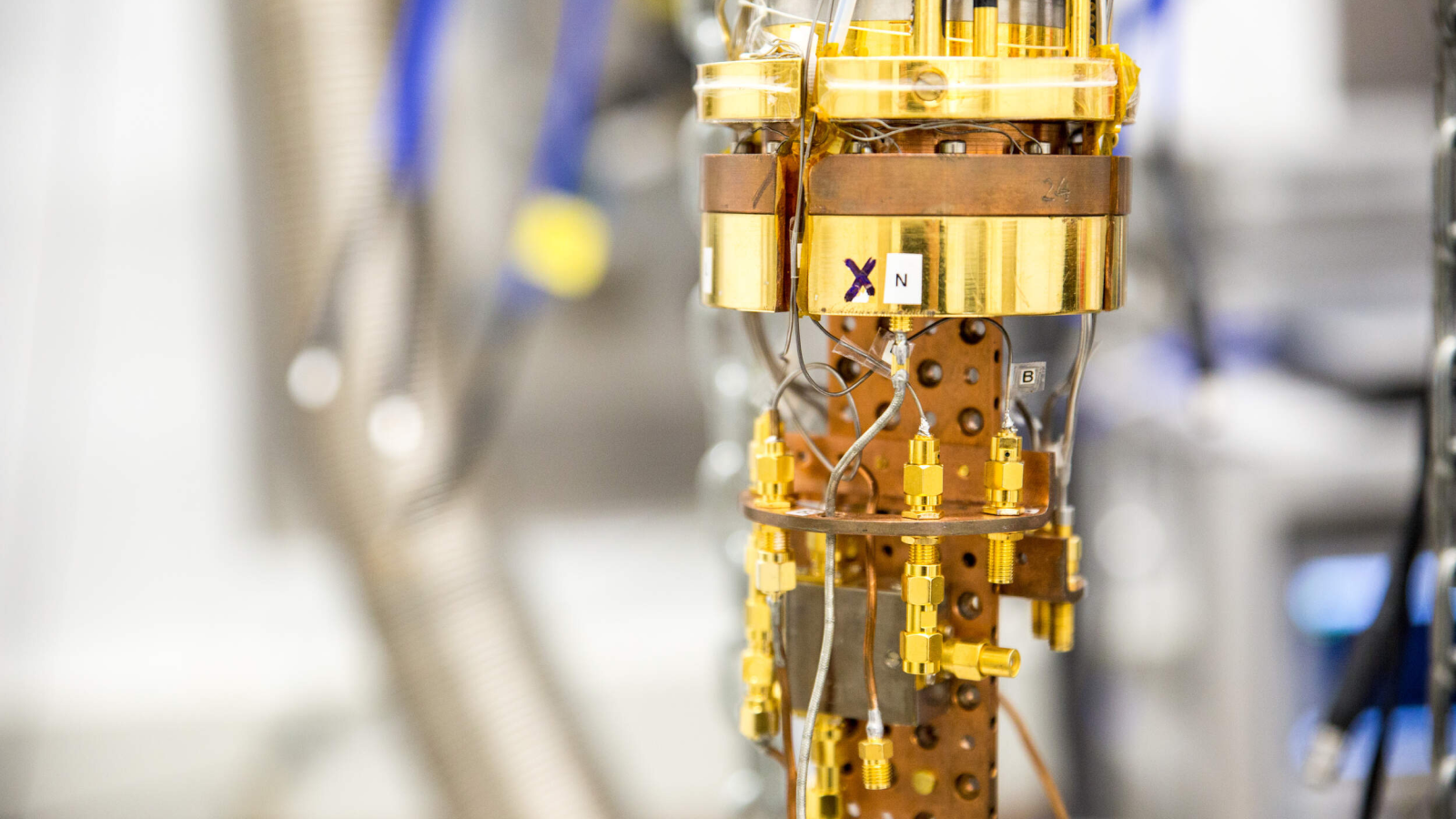Time crystals could help create quantum computing data storage that lasts minutes, new research shows — a huge improvement on the milliseconds-long duration of existing quantum data storage.
In the new research, scientists ran experiments on how time crystals interact with mechanical waves. Although time crystals are widely considered extremely fragile, the researchers showed that they could couple the time crystal to a mechanical surface wave without it being destroyed.
“This is for me the most interesting part,” study co-author Jere Mäkinen, an academy research fellow at Aalto University in Finland, told Live Science. “It is that you can really couple time crystals in a significant way to another system and harness the inherent robustness of time crystals.”
You may like
The researchers described their findings in a study published Oct. 16 in the journal Nature Communications.
Making waves in time crystal research
Traditional crystalline structures have a regular arrangement of atoms or molecules in space, but time crystals return to a certain state after regular periods of time. This is not the same as a pendulum, for instance, where the swinging frequency merely reflects the frequency of the oscillating downward force as the gravitational pull vies with the changing orientation of the tension. In the case of a time crystal, although in practice some initial prompt into action is required, the periodicity is acquired spontaneously, without anything driving it at that frequency.
Since they were first proposed in 2012, various setups that act as time crystals have been reported. Mäkinen and his collaborators based theirs on quasiparticles called magnons — collective waves in the value of a quantum property known as spin. They created magnons in “superfluid helium-3,” helium where the nuclei have two protons and just one neutron so that the spins of the particles in the nucleus cannot cancel out.
They cooled the helium 3 to cryogenic temperatures so that the dynamics of the atoms cause them to effectively attract each other, albeit weakly, and they reorganize into quasiparticles known as Cooper pairs. As Cooper pairs, these quasiparticles are limited to just one available quantum state, which thus eliminates the fluid viscosity.

(Image credit: asbe/GettyImages)
It turns out that sloshing the superfluid helium 3 to and fro with a mechanical surface wave has an interesting effect on it that boils down to the influence of the surface on the spin and orbital angular momentum of the Cooper pairs, which are the properties used to characterize the superfluid. To picture this, think of the influence of a wall on the possible orbits of a ball spun at the end of a string: in free space, the ball orbitals can take on any orientation in three dimensions, but take it close to a wall and some of these orbitals are no longer possible.
Mäkinen and his collaborators recognized that this would influence the period of the magnon time crystal. In their experiments, they found that the time crystal could survive the interaction for up to a few minutes. This suggests that it may be possible to couple data from quantum computers to the time crystal through a similar interaction for storage.
In quantum computers, each qubit can be in a superposition of two binary states at once, which is the basis for theoretically higher processing power. Memory in quantum computers, therefore, must store data that preserves this indefinite quality of the qubit state.
You may like
Memory technologies in today’s quantum computers commonly use the orientation of spin to store data, but these spin states are easily upset by environmental disturbances such as thermal noise. These disturbances nudge them into one or the other possible state, meaning the quantum nature of the data being stored is lost. As such, spin quantum memory only lasts a few milliseconds.
In contrast, the magnons that Mäkinen and his collaborators created lasted minutes, even with the disturbance of the mechanical surface wave. Since the surface wave leaves an imprint on the magnon time crystal frequency, it can be used to “write” the quantum data to be stored. With longer quantum memory, more quantum processing operations can be implemented on the data before it deteriorates, allowing for more complex tasks.
Textbook analogies
After looking at the experimental data, the team also found several similarities to optomechanics, where light and mechanical resonators interact. An example is the barely perceptible impact of a photon hitting a mirror attached to a spring, where the spring gains or loses energy as the photon bounces off the mirror.
Drawing parallels between time crystals and optomechanics could reveal theory from the well-established field of optomechanics that can apply to time crystals subject to a mechanical wave, providing a head start in understanding these interactions.
“Optomechanics is such a general theme in many fields of physics, so you can use it in a huge variety of different systems,” Mäkinen said.
Nikolay Zheludev, a professor of physics and astronomy at the University of Southampton who also studies time crystals and optomechanics but was not involved in the study, described the study as “interesting.”, “It opens a direction of research in the physics of nonequilibrium systems with potential implications for advancing quantum sensing and quantum control,” he told Live Science in an email.
Mäkinen said he is keen to explore different types of setups to couple mechanically to the time crystal, such as with a nanofabricated electromechanical resonator, which would have a much lower mass than the superfluid surface wave. “The obvious idea is to really go towards the quantum limit and see how far we can push it,” he said.

